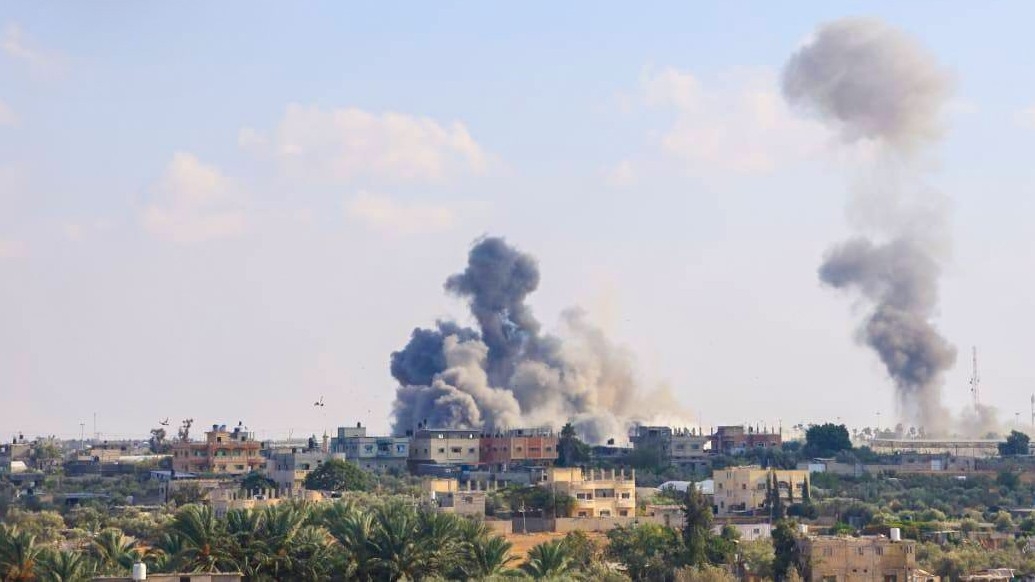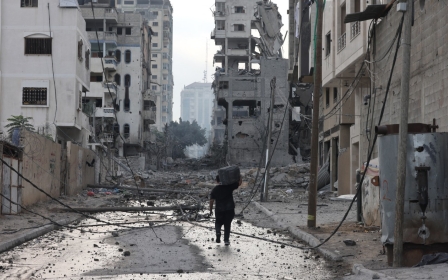Israel-Palestine war: Israeli army bombs Gaza-Egypt border crossing as Palestinians flee

The Rafah crossing between Gaza and Egypt has been targeted by three Israeli air strikes in the last 24 hours as Palestinians attempt to flee deadly Israeli air strikes, a rights group reported.
The Rafah border crossing is a key humanitarian corridor used by the Red Crescent to deliver aid to the besieged Gaza Strip, home to more than two million Palestinians. It is currently the sole gateway in and out of Gaza.
The air strikes targeting the crossing follow Israeli Defence Minister Yoav Gallant’s announcement of a “complete siege” of Gaza, sealing it off from supplies of water, electricity, food and fuel.
In response, the UN high commissioner for human rights, Volker Turk, stated on Tuesday that the imposition of a total siege is prohibited under international law.
Earlier on Tuesday, the Israeli military revised its recommendation to Palestinians fleeing Gaza to “get out” and flee southwards to Egypt, with a subsequent statement that the crossing was closed.
New MEE newsletter: Jerusalem Dispatch
Sign up to get the latest insights and analysis on Israel-Palestine, alongside Turkey Unpacked and other MEE newsletters
Meanwhile, the Sinai Foundation for Human Rights (SFHR), an organisation documenting human rights abuses in Egypt's Sinai, published on Tuesday footage of smoke resulting from the third Israeli air strike, as people from Gaza are escaping continuous Israeli bombing of residential neighbourhoods.
Four consecutive days of air strikes have predominantly targeted civilian infrastructure on the strip, and follow an unprecedented assault staged by Hamas on Saturday, when hundreds of Palestinian fighters stormed the boundary fence ringing Gaza by land, air and sea.
So far, over 900 Israelis have been killed by Palestinian fighters and rockets, and 765 Palestinians have been killed in Israel’s retaliatory air strikes.
SFHR also posted a video showing Egyptian humanitarian aid trucks returning to the Egyptian side after reported Israeli warnings that aid trucks would also be targeted.
The organisation added that the border crossing has been indefinitely closed following the repeated Israeli aerial bombardment.
The air strikes have also been reported by Reuters and Mada Masr citing security sources.
Another video posted online showed scenes of panic among Palestinian refugees at the border after an Israeli air strike on Tuesday.
Influx of refugees expected
On Monday, a government source told the local news site Mada Masr that Israel's ongoing operations in the Gaza Strip are leaving Egypt braced for an influx of refugees, with resources being set up in North Sinai to take care of the wounded and homeless.
The source told the news site that Egypt feared "a humanitarian catastrophe that we would not know how to deal with" and that the government was preparing tonnes of aid to be sent to the Gaza Strip in case the humanitarian situation worsened.
Gaza has been under Israeli-imposed land, sea and air blockade since 2006, with the passage of people and goods in and out of the enclave tightly controlled.
Egypt, the first Arab country to normalise relations with Israel, has traditionally played the role of mediator between Israel and Palestinian factions.
Middle East Eye delivers independent and unrivalled coverage and analysis of the Middle East, North Africa and beyond. To learn more about republishing this content and the associated fees, please fill out this form. More about MEE can be found here.





